ZZ Plant
- October 20, 2023
- 0 comment
The ZZ plant, scientifically known as Zamioculcas zamiifolia, is a popular and low-maintenance houseplant cherished for its striking appearance and resilience. This plant hails from the arid regions of Eastern Africa and has gained a reputation as one of the easiest indoor plants to care for. Its distinctive features include glossy, dark green, elliptical leaves that resemble feather-like fronds.

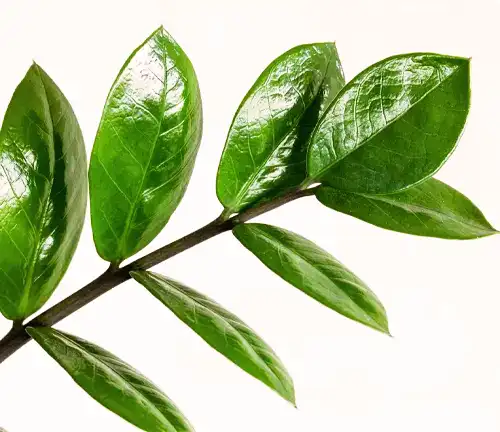
The ZZ plant’s adaptability to various light conditions, from low to moderate indirect sunlight, makes it a favorite among novice and busy gardeners. It’s renowned for its exceptional drought tolerance, requiring infrequent watering, and can endure extended periods of neglect without losing its elegance. ZZ plants not only serve as attractive ornamental additions to homes and offices but also contribute to improving indoor air quality by removing pollutants.
Their hardiness and minimal care requirements make the ZZ plant a superb choice for those seeking a touch of nature indoors without the hassle of demanding maintenance.
| Characteristics | Description |
| Scientific Name | Zamioculcas zamiifolia |
| Common Names | ZZ plant, Zanzibar Gem, Zuzu Plant, Aroid Palm |
| Size | Typically grows to a height of 2-3 feet (60-90 cm) |
| Foliage | Dark green, glossy, elliptical leaves with 6-8 inches (15-20 cm) in length |
| Light Requirements | Low to moderate indirect sunlight; can tolerate low light conditions |
| Watering | Allow the soil to dry out between waterings; water sparingly, every 2-3 weeks |
| Soil Type | Well-draining potting mix |
| Temperature | 65-75°F (18-24°C); can tolerate occasional temperature variations |
| Humidity | Tolerant of low humidity but benefits from occasional misting |
| Fertilization | Feed with a balanced, diluted houseplant fertilizer once a month during the growing season (spring and summer) |
| Propagation | Typically through leaf cuttings or division of rhizomes |
| Toxicity | Considered mildly toxic to pets and humans if ingested; may cause stomach discomfort |
| Drought Tolerance | Highly drought-resistant; can withstand periods of neglect |
| Pest and Disease Resistance | Generally resistant to pests and diseases |
Botanical Beauty of “ZZ plant”
The ZZ plant, known scientifically as Zamioculcas zamiifolia, is a botanical beauty that has taken the world of indoor gardening by storm. Its elegant, glossy, and elliptical leaves add a touch of nature to any space. Native to Eastern Africa, this striking plant has become a favorite among plant enthusiasts and novices alike for its stunning appearance and remarkable resilience. In this article, we will delve into the captivating allure of the ZZ plant and explore its unique features and characteristics.
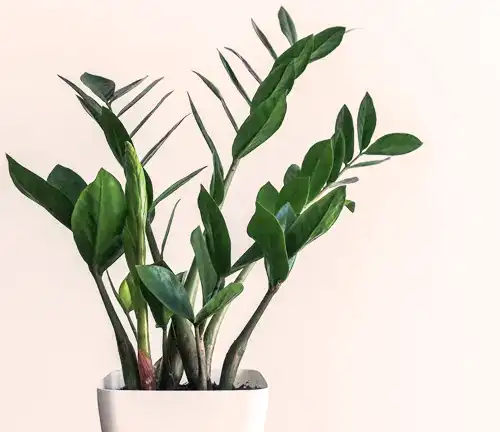
Woodland Elegance
The ZZ plant’s appearance is reminiscent of lush, tropical woodlands. Its dark green, feather-like fronds lend an air of woodland elegance to any room. These glossy, ornamental leaves create a sense of tranquility and beauty, making it a popular choice for interior decor. Whether placed on a desk, in a living room, or adorning a hallway, the ZZ plant’s aesthetic appeal is undeniable.
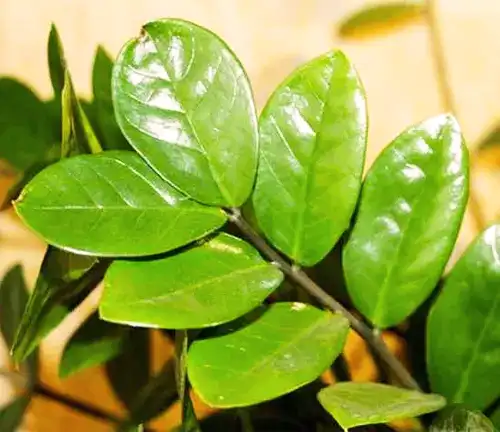
Ecological Importance
Beyond its aesthetic charm, the ZZ plant plays a crucial role in the ecosystem. In its native habitat, it thrives in arid, semi-arid regions, making it an integral part of the local flora. Its resilience in challenging environmental conditions serves as a valuable example of adaptation and survival in nature. Moreover, the ZZ plant contributes to biodiversity by providing habitat and sustenance to various insect species.
Cultivation and Conservation
Cultivating ZZ plants for the global market has helped reduce pressure on wild populations. Sustainable cultivation practices, such as responsible harvesting and propagation, ensure that the species continues to thrive while meeting the demands of the horticultural industry. These efforts help conserve the ZZ plant in its natural habitat, safeguarding its genetic diversity.
Fragrance
One of the lesser-known features of the ZZ plant is its unique fragrance. When the leaves are crushed or brushed against, they emit a subtle, earthy aroma that some liken to the scent of freshly tilled soil. This natural fragrance adds an extra dimension of intrigue to this already captivating plant.
Soil Stabilization
In its native environment, the ZZ plant serves a critical ecological role by stabilizing soil in regions susceptible to erosion. Its robust root system holds the soil together, preventing erosion and protecting the surrounding ecosystem. This ability underscores its importance in maintaining the ecological balance in its natural habitat.
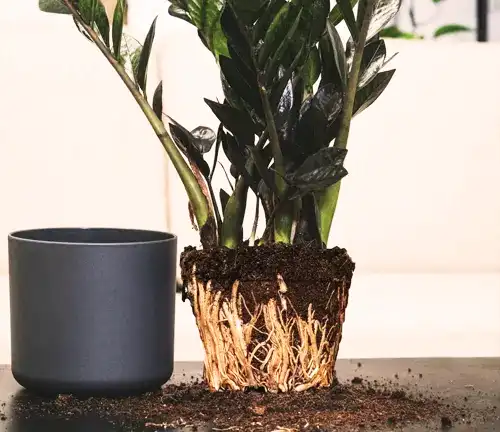
Common Uses
Apart from its role as an indoor decorative plant, the ZZ plant finds applications in various settings. It is used in interior landscaping to create greenery in corporate spaces, hotels, and shopping malls. Additionally, it’s a popular choice for adding greenery to homes, making it a preferred plant for individuals seeking low-maintenance yet elegant indoor flora.
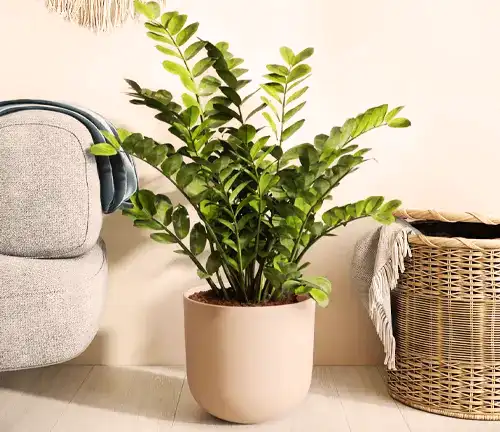
Benefits
The ZZ plant offers numerous benefits, making it an ideal choice for both seasoned gardeners and those new to plant care. Its tolerance for low light and irregular watering schedules make it an excellent option for busy individuals. Furthermore, ZZ plants are renowned for their air-purifying qualities, removing pollutants from indoor spaces and enhancing air quality.
Different Species
Zamioculcas zamiifolia
(Classic ZZ Plant)
This is the most common and widely recognized species of ZZ plant. It has glossy, dark green, pinnate leaves, and is known for its hardiness and adaptability to a range of indoor conditions.
Zamioculcas zamiifolia
‘Raven’
The ‘Raven’ ZZ plant is a unique cultivar with almost black, dark purplish-black foliage. It provides an intriguing twist on the classic ZZ plant’s appearance.
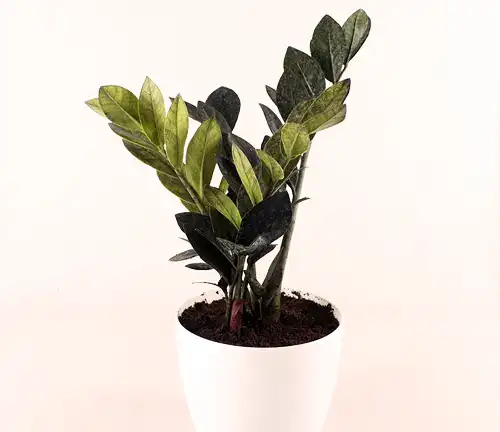
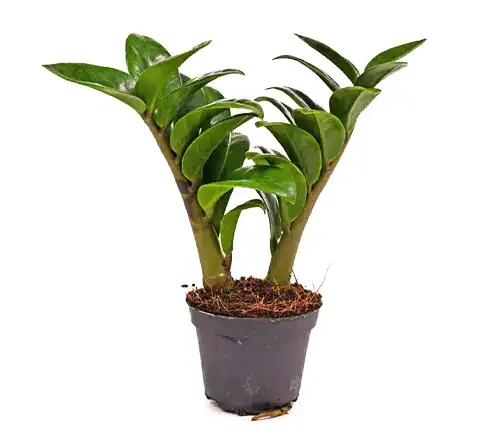
Zamioculcas zamiifolia
‘Zenzi’
The ‘Zenzi’ ZZ plant is a dwarf variety that remains smaller and more compact compared to the classic ZZ plant. It’s an ideal choice for those with limited space.
Zamioculcas zamiifolia
‘Zamicro’
‘Zamicro’ is another miniature variety of the ZZ plant, which has even smaller leaves and a more diminutive stature, perfect for tiny decorative pots.

Frequently Asked Questions (FAQs)
- What is a ZZ plant?
The ZZ plant, scientifically known as Zamioculcas zamiifolia, is a popular and low-maintenance indoor houseplant known for its striking appearance and resilience. - How do I care for a ZZ plant?
ZZ plants thrive in indirect light, require infrequent watering, and do well in well-draining soil. They are known for their resilience and can tolerate neglect. - Can ZZ plants survive in low light conditions?
Yes, ZZ plants are known for their ability to thrive in low to moderate indirect light. They are an excellent choice for spaces with limited natural light. - How often should I water my ZZ plant?
ZZ plants prefer to dry out between waterings. Water sparingly, typically every 2-3 weeks, allowing the soil to dry before rewatering. - What is the ideal temperature for ZZ plants?
ZZ plants prefer temperatures between 65-75°F (18-24°C) and can tolerate occasional temperature fluctuations. - Can ZZ plants be toxic to pets and humans?
ZZ plants are considered mildly toxic if ingested and may cause stomach discomfort. It’s best to keep them out of reach of pets and children. - How do I propagate ZZ plants?
ZZ plants can be propagated through leaf cuttings or by dividing the rhizomes. Leaf cuttings should be allowed to callus before planting in well-draining soil. - What are the common pests and diseases that affect ZZ plants?
ZZ plants are generally resistant to pests and diseases, but they can occasionally be affected by mealybugs or scale insects. Proper care and maintenance can prevent these issues. - Are ZZ plants air-purifying?
Yes, ZZ plants are known for their air-purifying qualities. They can help remove pollutants and improve indoor air quality. - Can ZZ plants be used for landscaping or outdoor gardens?
ZZ plants are primarily grown as indoor houseplants due to their low light and drought tolerance. They are not typically used in outdoor landscaping. - Do ZZ plants have a fragrance?
When the leaves of ZZ plants are crushed or brushed against, they emit a subtle, earthy fragrance similar to freshly tilled soil.


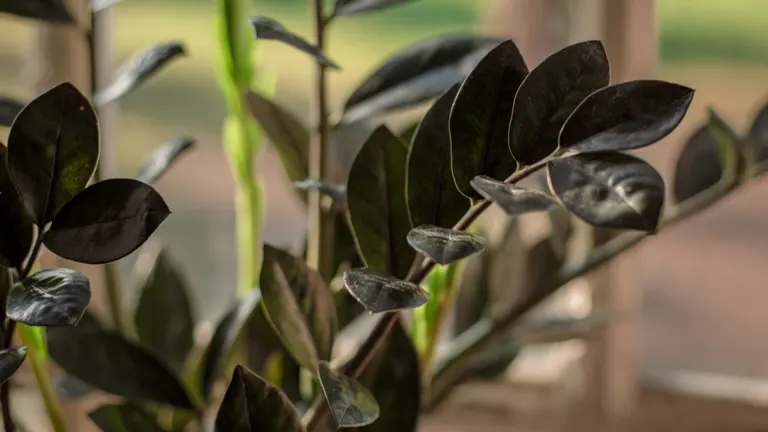




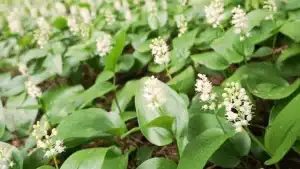
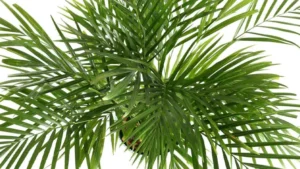

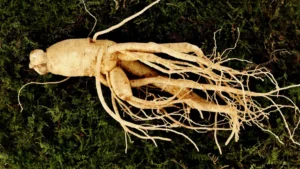
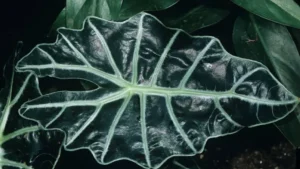



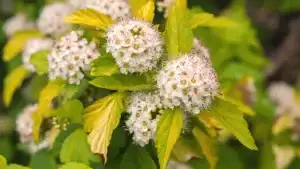
Leave your comment